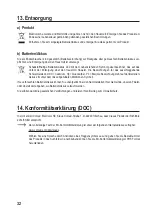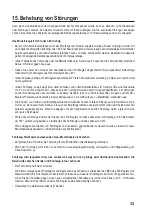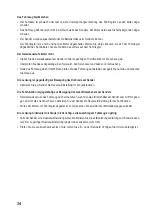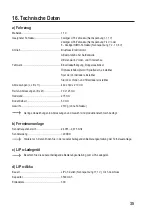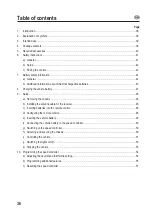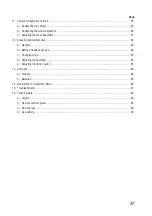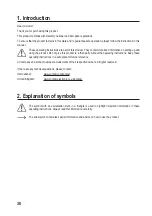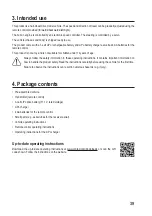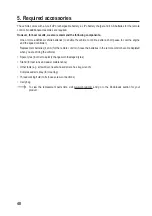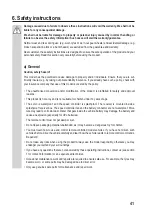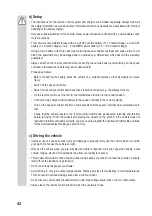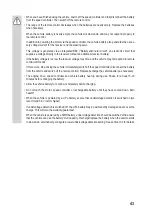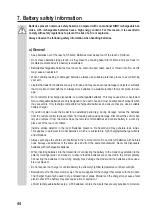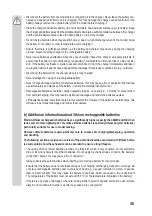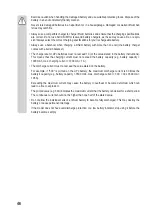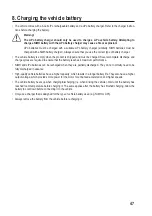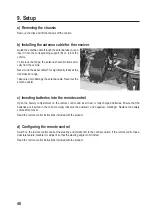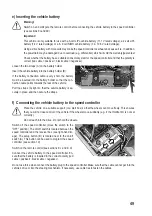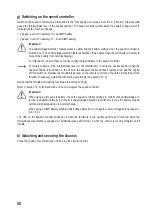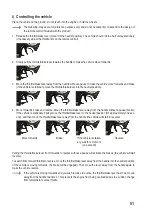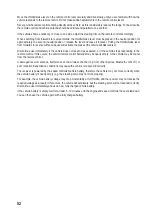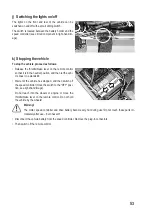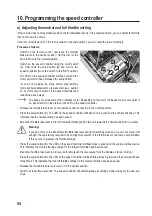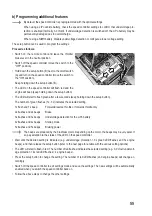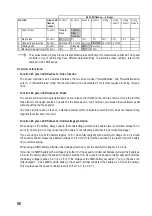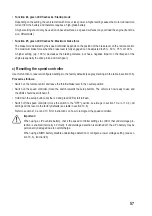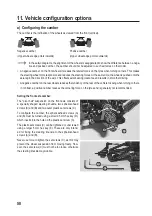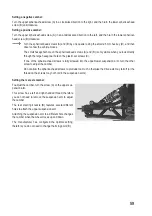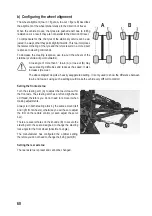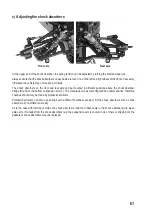
46
Exercise caution when handling the damaged battery and use suitable protective gloves. Dispose of the
battery in an environmentally friendly manner.
Never store damaged batteries in an apartment or in a house/garage. Damaged or swollen lithium bat-
teries may catch fire.
• Always use a compatible charger to charge lithium batteries and ensure that the charging specifications
are correct. Do not use NiCd, NiMH or lead-acid battery chargers, as these may cause a fire or explo
-
sion! Always select the correct charging specifications for your rechargeable battery.
•
Always use a balancer when charging a lithium battery with more than one cell (the battery charger
comes with a built-in balancer).
•
The charge rate for LiPo batteries must not exceed 1C (or the value stated in the battery instructions).
This means that the charging current must not exceed the battery capacity (e.g. battery capacity =
1000 mAh, max. charging current = 1000 mA = 1 A).
•
The discharge current must not exceed the value stated on the battery.
For example, if "30C" is printed on the LiPo battery, the maximum discharge current is 30 times the
battery's capacity (e.g. battery capacity = 3500 mAh, max. discharge current = 30C = 30 x 3500 mA =
105 A).
Exceeding the maximum current may cause the battery to overheat or become deformed, which can
lead to a fire or explosion!
The printed value (e.g. 30C) indicates the maximum current that the battery can deliver for a short period.
The continuous current should not be higher than one half of the stated value.
•
Do not allow the individual cells of a lithium battery to become fully discharged. This may destroy the
battery or cause permanent damage.
If the model does not have overdischarge protection or a low battery indicator, stop using it before the
battery becomes empty.
Summary of Contents for 1648548
Page 138: ...138 ...
Page 139: ...139 ...

